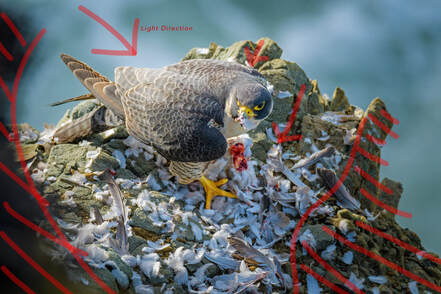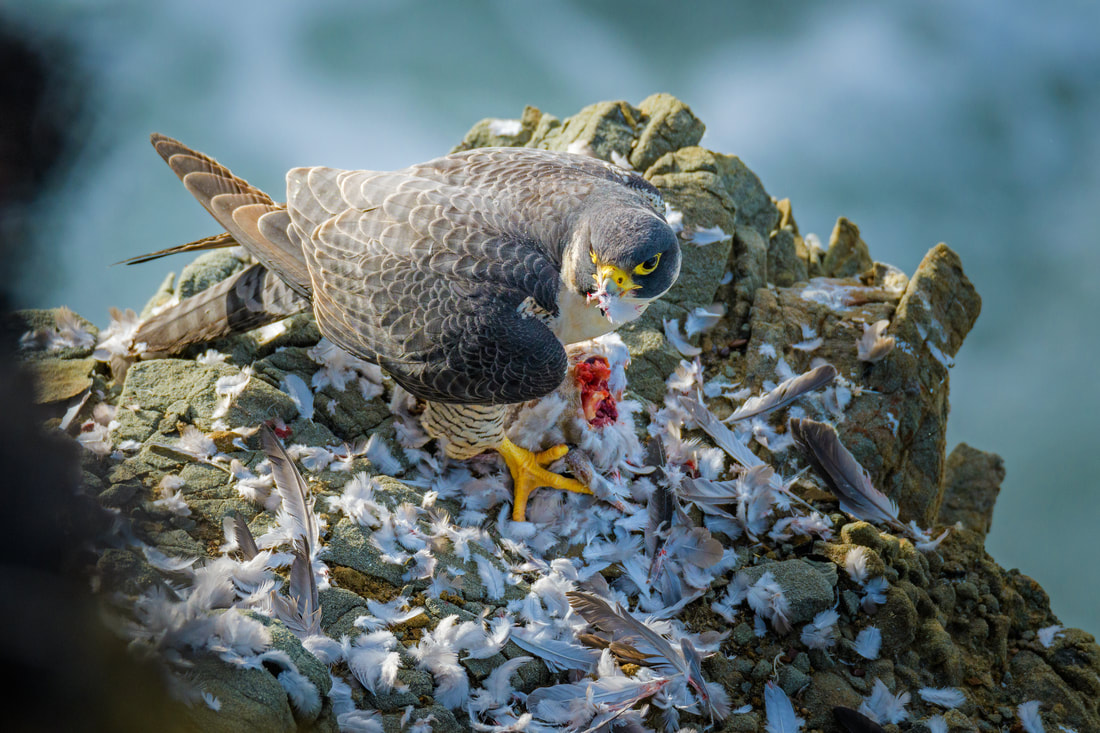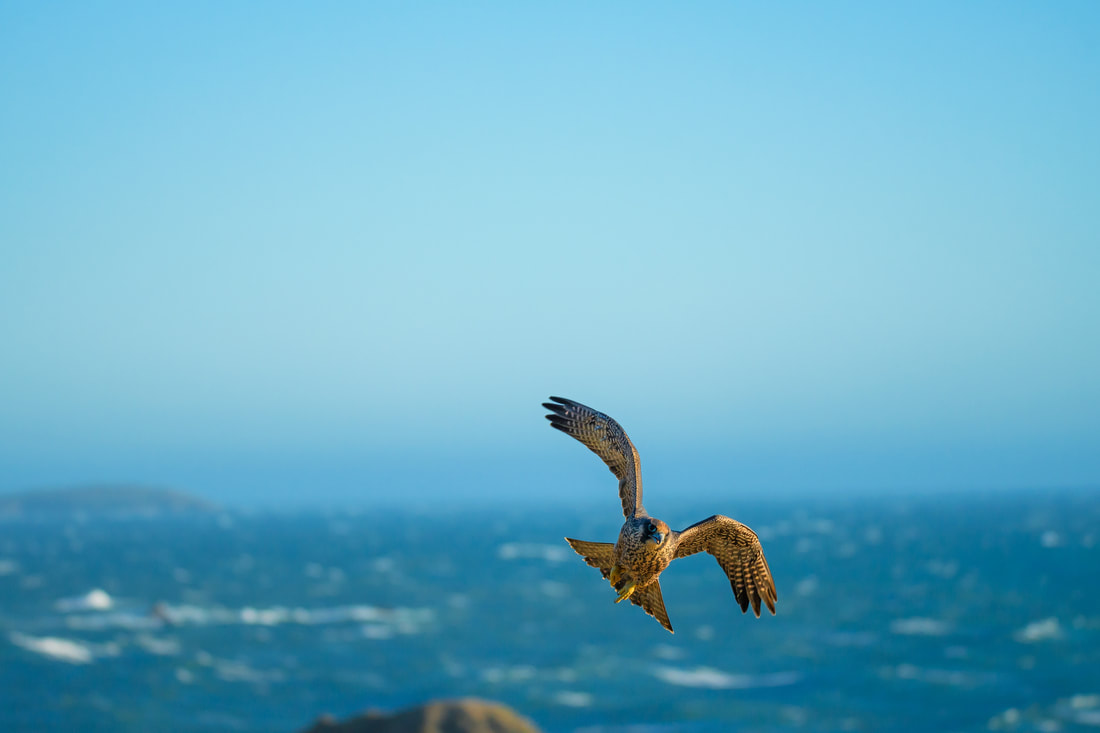|
"You have to take risks. We will only understand the miracle of life when we allow the unexpected to happen." -Paulo Coelho Hi everyone! I've been saving this images for a few months now, waiting for it to be publicly released in Hakai Magazine. It's great to be able to finally review it and talk about why the editor's chose a peregrine falcon to be featured inside a coastal and marine focused magazine. Ironically, it was published under Hakai Magazine's One Great Shot, which has no relation to this blog. Peregrine falcons can be found in many environments: plains, deserts, forests, and even in cities where people are astonished as they look up to see the world's fastest animal diving from skyscrapers to hunt pigeons. But in North America, possibly the most important ecosystems for peregrines are ocean coastlines. Specifically, the Pacific Coast is an important migratory pathway for them, as confirmed by my friend and bird of prey researcher of over 20 years, Dan Varland.
Camera Settings and Technique Nikon D500, 400mm, 1/2000th sec, f/9, ISO 6400, WB 5,000k This time around, I'm going to talk a little about risk. I like calculated risk, wherein the probability of me succeeding is high after weighing out the odds. In this instance, in order to get the shot, I had to lean over the side of a cliff with thick gusts of wind and the awkward weight of the dSLR and telephoto lens in hand. Frankly, I took a risk with my life getting the shot of the peregrine falcon eating an invasive species of dove, but I knew I had some good physical balance on my side that I've learned over the years from rock climbing and long-distance mountain running. I also know this area well; its geography, its elements, and its dangers. That said, I do not suggest that you should risk your own life for shots. Another element that was crucial to getting the image was making sure that I was not a disturbance to the falcon. The safety of wildlife is never more important than our photography, or for our own curiosity for that matter. We all have our personal space bubbles, right? But in the case of most wildlife, their bubble is much bigger and more sensitive. It could have been easy to make this falcon feel uncomfortable and abandon her prey, which means she goes hungry. It also means that she has to spend the energy to to hunt a few more times, because a successful hunt happens only about once in every five tries or more. Either accidentally or, heaven forbid, intentionally scaring off a predator from its meal may mean it will starve to death. Not exactly ideal! It was respect that allowed me to get this image. And it will always be respect that will allow us to get images worth sharing.  In-depth Study It's all about the light in this photo. Arguably, you could say that about any good photo, but it's especially true here for a number of reasons. The light needed be directional and bright, as opposed to flat and soft in order to convey the dimension of a cliff perch high above the ocean, as well as showing the beautiful form of the large falcon. The light also needed to come from exactly the direction shown in order to highlight the three-dimensionality of the scene by creating shadows that actually subframe the kill site. If it had come from behind the bird, it would cast a shadow towards my lens and light up the cliff, drawing more attention to the outside of the frame rather than the middle. From the right side, it would have casted a pretty favorable light on the falcon, but then the cliff would have again be lit up in addition to the ocean, creating less depth and dimension. If the light had come from behind, the cliff's shadow would have drown everything out. It's especially great that the light came from this direction at the time I was there because it was the only possible point to get the image from. I also liked how the peregrine's mouth was full of feathers and timed my capture so that the light was hitting her face when she turned her head towards me. And lastly, some simple leading lines in the form of the limestone rock jutting out from the cliffside help point towards the kill site. Are you looking for more info on peregrine falcons and their conservation success?
1 Comment
|


 RSS Feed
RSS Feed